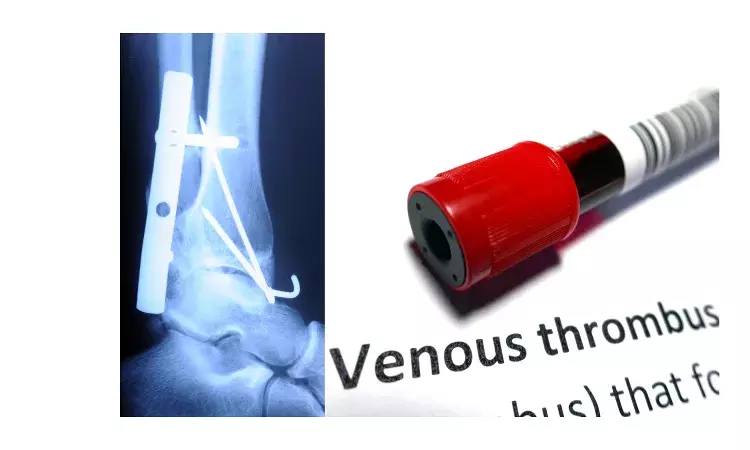- Home
- Medical news & Guidelines
- Anesthesiology
- Cardiology and CTVS
- Critical Care
- Dentistry
- Dermatology
- Diabetes and Endocrinology
- ENT
- Gastroenterology
- Medicine
- Nephrology
- Neurology
- Obstretics-Gynaecology
- Oncology
- Ophthalmology
- Orthopaedics
- Pediatrics-Neonatology
- Psychiatry
- Pulmonology
- Radiology
- Surgery
- Urology
- Laboratory Medicine
- Diet
- Nursing
- Paramedical
- Physiotherapy
- Health news
- Fact Check
- Bone Health Fact Check
- Brain Health Fact Check
- Cancer Related Fact Check
- Child Care Fact Check
- Dental and oral health fact check
- Diabetes and metabolic health fact check
- Diet and Nutrition Fact Check
- Eye and ENT Care Fact Check
- Fitness fact check
- Gut health fact check
- Heart health fact check
- Kidney health fact check
- Medical education fact check
- Men's health fact check
- Respiratory fact check
- Skin and hair care fact check
- Vaccine and Immunization fact check
- Women's health fact check
- AYUSH
- State News
- Andaman and Nicobar Islands
- Andhra Pradesh
- Arunachal Pradesh
- Assam
- Bihar
- Chandigarh
- Chattisgarh
- Dadra and Nagar Haveli
- Daman and Diu
- Delhi
- Goa
- Gujarat
- Haryana
- Himachal Pradesh
- Jammu & Kashmir
- Jharkhand
- Karnataka
- Kerala
- Ladakh
- Lakshadweep
- Madhya Pradesh
- Maharashtra
- Manipur
- Meghalaya
- Mizoram
- Nagaland
- Odisha
- Puducherry
- Punjab
- Rajasthan
- Sikkim
- Tamil Nadu
- Telangana
- Tripura
- Uttar Pradesh
- Uttrakhand
- West Bengal
- Medical Education
- Industry
Ankle fracture patients at higher risk of venous thromboembolism: Study

Canada: Some of the most common and impactful complications of operatively treated ankle fractures include wound necrosis, surgical site infection, malunion, nonunion, and posttraumatic ankle arthritis.
A new study by Dr. Keerat dr MD, MSc, and team reported that there was a 90-day incidence of venous thromboembolism among patients discharged from the Emergency Department (ED) with ankle fractures requiring immobilization was 1.3%.
This study is published in Annals of Emergency Medicine.
The objective of the study was to examine the 90-day incidence of venous thromboembolism among patients discharged from an ED with ankle fractures requiring temporary immobilization. Secondary objectives were to examine individual factors associated with venous thromboembolism in this population and to compare the risk of venous thromboembolism in patients with ankle fractures against a priori-selected control group.
The study was a retrospective cohort study using province-wide health datasets from Ontario, Canada. We included patients aged 16 years and older discharged from an ED between 2013 and 2018 with closed ankle fractures requiring temporary immobilization. The estimated 90-day incidence of venous thromboembolism after ankle fracture. A Cox proportional hazards model was used to evaluate risk factors associated with venous thromboembolism, censoring at 90 days or death. Patients with ankle fractures were then propensity score-matched to 2 control groups: patients discharged with injuries not requiring lower limb immobilization (I.e, finger wounds and wrist fractures) to compare relative hazard of venous thromboembolism.
The results of the study were found to be
• A total of 86,081 eligible patients with ankle fractures. The incidence of venous thromboembolism within 90 days was 1.3%. Factors associated with venous thromboembolism were older age (hazard ratio [HR]: 1.18).
• Venous thromboembolism or superficial venous thrombosis history (HR: 5.18), recent hospital admission (HR: 1.33), recent nonankle fracture surgery (HR: 1.58).
• Subsequent surgery for ankle fracture (HR: 1.80). In the matched cohort, patients with ankle fractures had an increased hazard of venous thromboembolism compared to matched controls with finger wounds (HR: 6.31; 95% CI: 5.30 to 7.52) and wrist fractures (HR: 5.68; 95% CI: 4.71 to 6.85).
Dr Grewal, and team reported that "The 90-day incidence of venous thromboembolism among patients discharged from the ED with ankle fractures requiring immobilization was 1.3%. These patients had a 5.7- to 6.3-fold increased hazard compared to matched controls. Certain patients immobilized for ankle fractures are at higher risk of venous thromboembolism, and this should be recognized by emergency physicians."
For further information: https://www.annemergmed.com/article/S0196-0644(21)00517-5/fulltext
Medical Dialogues consists of a team of passionate medical/scientific writers, led by doctors and healthcare researchers. Our team efforts to bring you updated and timely news about the important happenings of the medical and healthcare sector. Our editorial team can be reached at editorial@medicaldialogues.in.
Dr Kamal Kant Kohli-MBBS, DTCD- a chest specialist with more than 30 years of practice and a flair for writing clinical articles, Dr Kamal Kant Kohli joined Medical Dialogues as a Chief Editor of Medical News. Besides writing articles, as an editor, he proofreads and verifies all the medical content published on Medical Dialogues including those coming from journals, studies,medical conferences,guidelines etc. Email: drkohli@medicaldialogues.in. Contact no. 011-43720751


